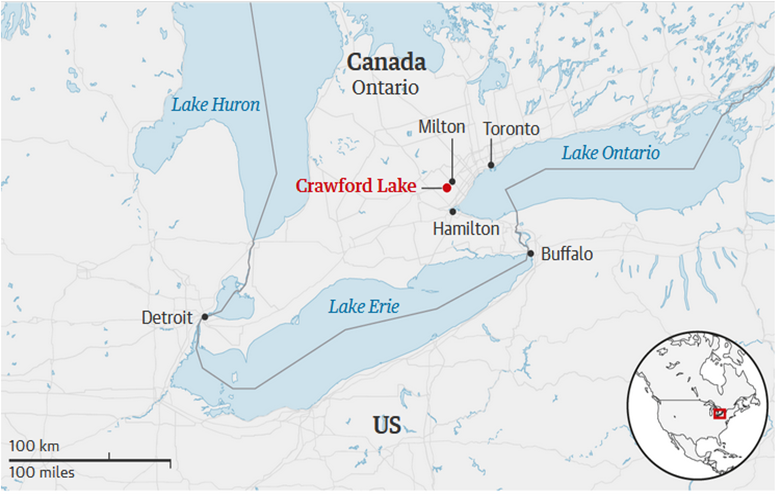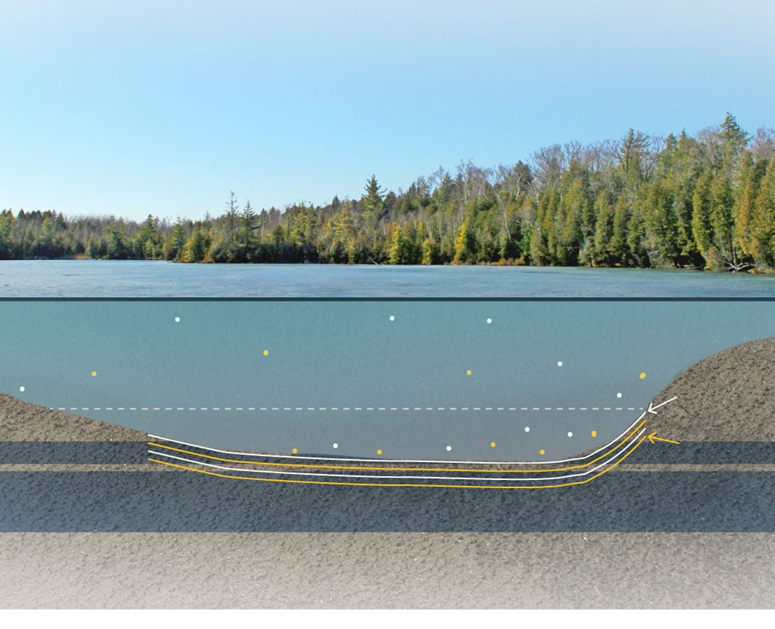Canadian Crawford Lake.. The reference site for a new geological era on Earth

Scientists have declared Crawford Lake in Canada the starting site of a new geological era on Earth, and the Anthropocene Working Group (the era of human impact) considered that the sediments at the bottom of this small lake of about one square kilometer are the most prominent example of the effects of human activity on the planet.
A group of scientists announced Tuesday that it had chosen Lake Crawford, located near Toronto in Canada, to be the global reference for the beginning of the Anthropocene, the new geological era when the massive human impact on the planet began.

The Working Group on the Anthropocene (the era of human impact) considered that the sediments at the bottom of this small lake of about one square kilometer are the most prominent example of the effects of human activity on the planet.
The group explained that these deposits range from microplastics to eternal chemical pollutants, passing through invasive species and greenhouse gases, and ash resulting from the combustion of oil and coal, and the remnants of nuclear explosions.
Since 2009, this group of geoscientists has been collecting evidence of humanity's transition into a new geological era caused by human influence.

The Earth's history, which extends over 4.6 billion years, is systematically divided into eras, periods, epochs, and geological eras, a division taught by students and developed by the International Commission on Stratigraphy. Humanity is currently living in the modern life period, the Quaternary era, the Holocene era (the modern era).
It is this committee that has tasked the Anthropocene Working Group with de facto answering three key questions.
According to these questions, if in the next million years a group of aliens inspected the layers of rocks and sediments on Earth, would they discover a human footprint important enough to conclude that a new geological frontier had been clearly crossed? If so, when do we find the clearest evidence of this? and where?

As for the first question, the working group's answer is unequivocal, as they assert that humans did indeed take the planet out of the Holocene era, which began 11,700 years ago, after several ice cycles, and moved it to a "new world."
It remains to locate the symbolic place where this shift is most evident. It could be a lake, a coral reef, a glacier... Nine sites in China, Canada, Japan and elsewhere have been shortlisted for potential places in this context.
For the team, the turning point is the mid-twentieth century, when all indications of the presence of human influence in the sediments witnessed an explosive rise that scientists have called the "Great Acceleration".
As for the third question that remained unanswered, which is identifying the symbolic place where this transformation is most evident, it was presented by the group of scientists on Tuesday when Lake Crawford was considered the best example of the era of human influence on the planet.
Source : websites

